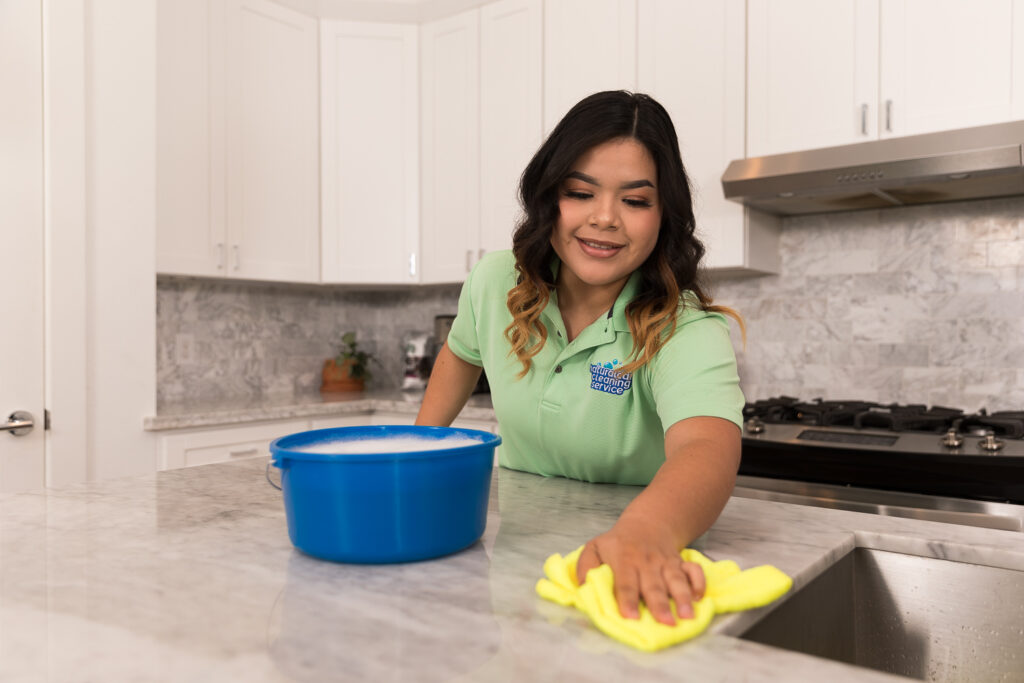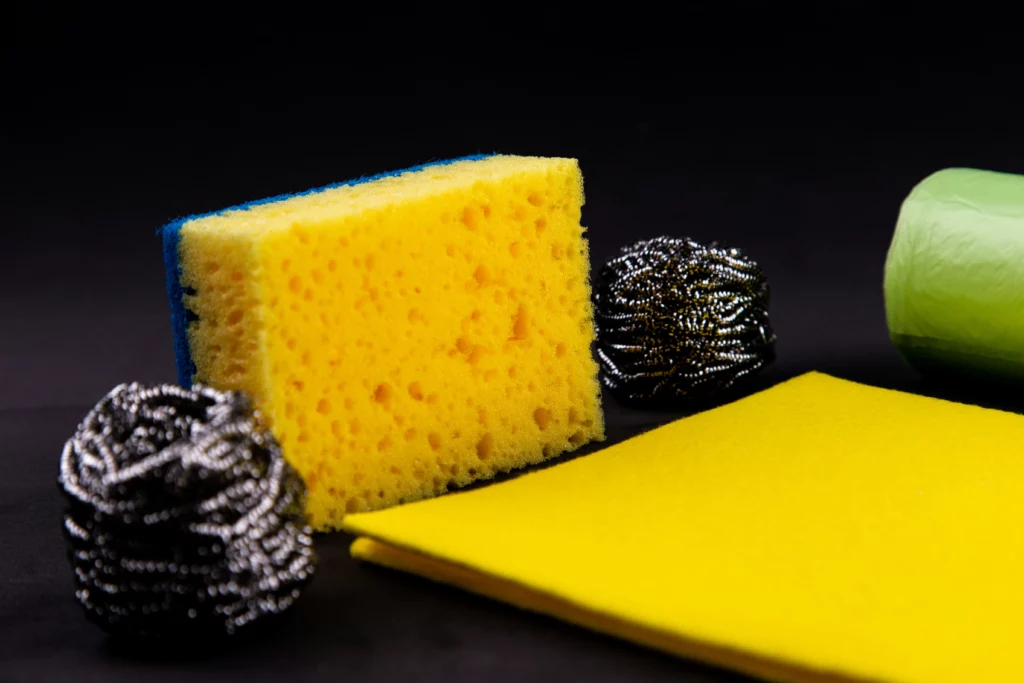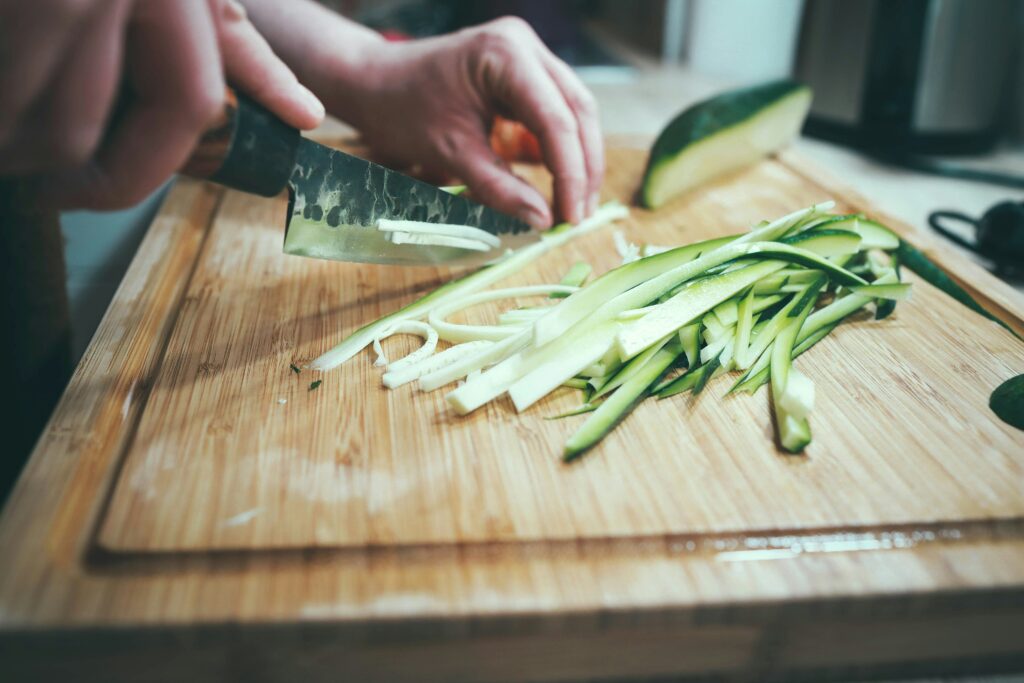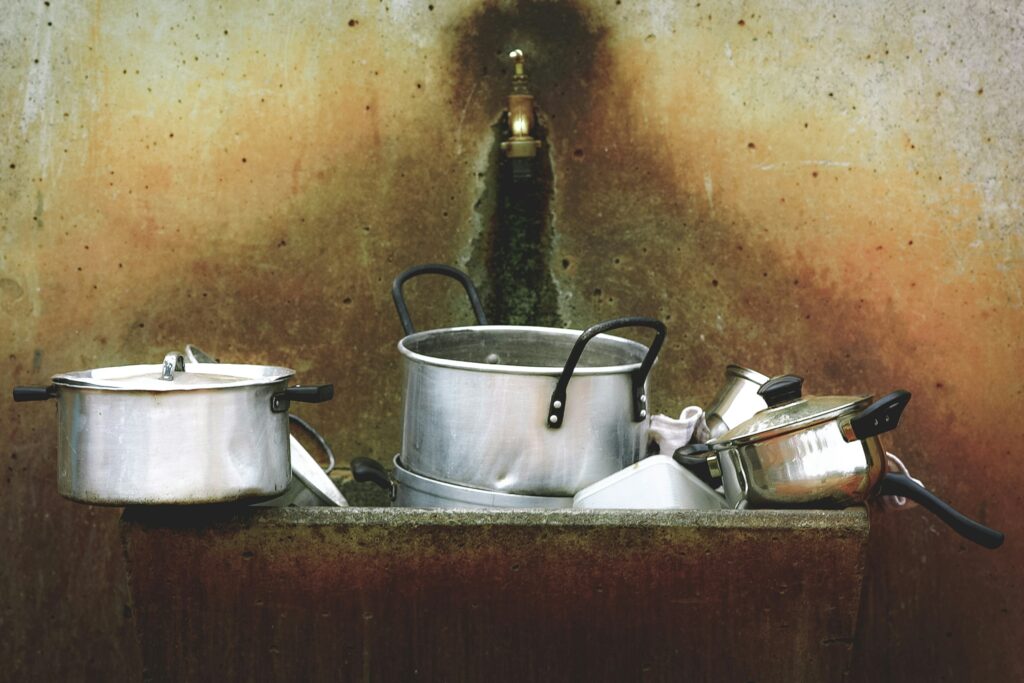Your kitchen is the bustling heart of your home, a culinary sanctuary where delicious meals are crafted and memories are made. But amidst the aroma of freshly baked cookies and the sizzle of sautéing vegetables, there’s a silent, invisible threat lurking – bacteria. Even if you take pride in the cleanliness of your kitchen, germs are very meticulous about being invisible. Naturalcare Cleaning Service is here to guide you through the top five areas in your kitchen surreptitiously teaming with bacteria and what you can do to annihilate them.
5. Countertops: The Germ Junction

Countertops are the unsung heroes of any kitchen, bearing the brunt of meal prep chaos. However, they also play host to a slew of bacteria. Every time you handle raw meat or unwashed produce and then touch the countertops, you’re essentially inviting bacteria to a party. From E. coli to Salmonella, these pathogens can be spread easily, leading to cross-contamination.
To combat this, it’s crucial to clean your countertops thoroughly after each use. Use a disinfectant spray or a homemade solution of vinegar and water to wipe down surfaces. Pay extra attention to seams and edges where crumbs and spills can accumulate unnoticed. Regular deep cleaning with natural, chemical-free products can keep your countertops safe and hygienic.
4. Sponges: The Microbe Magnet

Your trusty kitchen sponge is a double-edged sword. While it’s great at scrubbing away grime, it’s also a breeding ground for bacteria. Sponges are porous, creating an ideal environment for germs to thrive. In fact, research has found that kitchen sponges can contain more bacteria than a toilet seat!
To keep your sponge from becoming a little microbial factory, you need to disinfect it regularly. Microwave for one minute, run it through the dishwasher on the hot cycle, or replace your sponge every two weeks to keep it fresh and germ-free. Consider using different sponges or cleaning cloths for various tasks to prevent cross-contamination.
3. Trash Can: The Forgotten Foe

It probably won’t surprise you that your trash can is a hangout for local bacteria. Even though it is bagged, spills and leaks can slip through, incubating a layer of grime and germs. Searching for Listeria and Salmonella? It may be right here since you recently discarded raw meat packaging or food scraps.
To keep that trash can from hosting a biohazard, clean it periodically. Take it outside and scrub with hot, soapy water, then rinse and LET IT DRY COMPLETELY before putting in a new bag. Sprinkling baking soda at the bottom will absorb odors and can deter some bacterial growth.
2. Cutting Boards: The Culprit of Cross-Contamination

Cutting boards are great for a variety of kitchen tasks, but they are also a huge strike point for bacteria. Whether you are chopping your veggies or slicing up some meat, the cutting board is coming into contact with a lot of different foods—and that sets the stage for cross-contamination. Wooden options can be particularly problematic since the bacteria reside in the small crevices and breaks that develop with use.
So, regardless of your preferred material for cutting boards, to ensure that they are sanitary, try ideally using a different one for each of the following:. After each use, scrub well with hot, soapy water, rinse, and then sanitize with a solution of one tablespoon of bleach to one gallon of water, leaving them to air dry. Allow them to air dry thoroughly after use. You can also clean wooden boards with some vinegar, which you can find here. You also need to periodically treat wooden cutting boards with some mineral oil to keep them from cracking and the buildup of bacteria.
1. Kitchen Sink: The Silent Spread

So, the kitchen sink—more like a germy lurking zone in your house. From hand rinsing to scrubbing fruits and veggies, and not to forget, soaking the dirty dishes, the sink really sees a lot of action. But you know what? This is what makes the kitchen sink a breeding pool for bacteria! The research says the kitchen sink is the number-one place having more germs than the bathroom. This is why hygienicswab.com advises you to clean your sink every day. Spread baking soda and splash vinegar over it so that it starts to fizz. Utilize this mixture to scrub your sink; it cleans and also deodorizes. Pay special attention to the cleanliness of your drain as well as faucet handles. You can also sanitize your sink weekly with a solution of one tablespoon of bleach to one gallon of water.
The Naturalcare Cleaning Service Difference

A germ-free kitchen can be a simple and easy task for your home. With Naturalcare Cleaning Service, it means a spotless, chemical-free clean that makes your home a safe and healthy haven. Our team of professionals uses eco-friendly products that are tough on germs but gentle on your surfaces, giving your kitchen not only a clean look but also a clear absence of dangerous chemicals.
Final Thoughts
Your kitchen is the heart of your home, and keeping it clean means everything for your family’s health. If the area is comprehensively deep cleaned frequently, it will minimize the risk of bacteria getting to be a problem. Remember, Naturalcare Cleaning Service is just a phone call away, and that one impossible task is now in our capable hands.
HOUSTON RESIDENTS: GET STARTED TODAY
